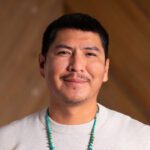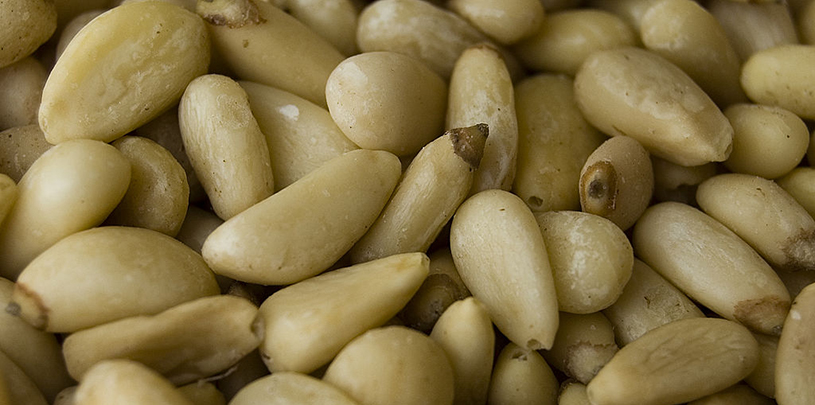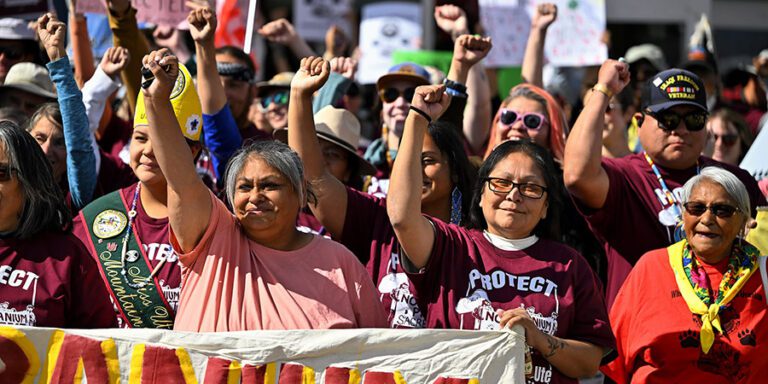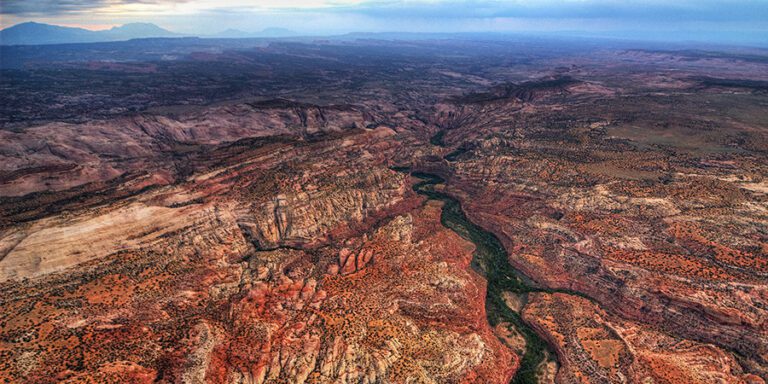
14 contemporary Puebloans eliminated all pre-European-contact foods, including sugar, alcohol, wheat, beef, chicken, and even chilis, and ate only Native foods.
Fried grasshoppers, buffalo tongue, rabbit stew, blue cornballs. These may not sound like your grandma’s recipes, but, for New Mexico’s Puebloan peoples, they are. Prickly pear eggs, marrowbone butter, and roasted piñon nuts are just a few of the delicacies you’ll find in the Puebloan Food Experience, a new cookbook based on an experiment in eating ancestral foods that yielded surprising health results.
Going back to the Native food basics
Fourteen contemporary Puebloans, from pueblos across northern New Mexico, went back to the basics for three months. They eliminated all pre-European-contact foods, including sugar, alcohol, wheat, beef, chicken, and even chilis, a staple that’s hard for many modern New Mexicans to live without. The project was based on a simple thesis: that the key to good health for Native people might lie in eating what our ancestors ate.
Santa Clara Pueblo member Roxanne Swentzell, co-author of the unusual cookbook, had high cholesterol, high blood pressure, and a host of other health problems. But she didn’t start thinking seriously about what she was eating until her eight-year-old grandson was diagnosed with pre-diabetes.
“It broke my heart,” said Swentzell, a celebrated sculptor, artist, and author with a melodic speaking voice, who, when asked, doesn’t hesitate to burst into song. She shared her experience as part of the Indigenous Peoples’ Gathering for Healthy Communities, Culture, and Climate. The gathering welcomed Native people from as far away as Canada, Alaska, and South America. It was convened by the Colorado Plateau Intertribal Conversations Group, which brings members of 12 Southwest tribes together regularly to discuss protecting and preserving language and culture, health, water, and tribal sacred sites.
Linking diet to physical and mental health
In the traditional adobe artist workroom at the Poah Cultural Center in the Pueblo of Pojoaque, outside Santa Fe, Swentzell, told tribal members how she noticed many of her neighbors in Santa Clara and other pueblo communities were suffering from physical and mental health problems, including high cholesterol, obesity, heart disease, and depression.
“Many of us have been uprooted from our aboriginal land base and are living in a foreign country, in a culture that is not our own,” Swentzell said. For 35 years, Swentzell has been a seed saver, preserving and planting heritage corn, squash, and beans — the “three sisters” of the traditional Puebloan diet. “It has been a lonely job. No one takes care of our seeds. We’re eating unhealthy foods, but we have these crops that kept our ancestors alive. We Puebloan people are lucky, we weren’t relocated, we are home, but we’re still eating foreign foods.”
Twenty generations: eating Native foods like our ancestors
According to Swentzell, it takes 20 generations for any species to adapt to a new environment. She knows this from farming. “If I plant a seed, if takes that seed 20 generations — 20 crops — for it to adapt to this place, for it to get to know this soil, this sun, this rain. And we Native people are the only people who have been here in this place for 20 generations. And what those people ate 20 generations ago are the perfect foods for us.” And this gave Swentzell an idea.
The perfect foods for us
She organized 14 Puebloans, including herself, to eat only traditional foods for three months. But first, the dieters went to the doctor. They subjected themselves to blood tests and other baseline exams. “We were poked and prodded, and we were horrified by what we found,” Swentzell confided.
The three-month challenge proved difficult, and the group turned to each other for moral support, but 12 weeks later the results were unmistakable. “My doctor was blown away,” Swentzell said.
After years of struggling with what her doctor had diagnosed as genetic high blood pressure, and testing out various medications, after just three months of eating Native foods, her condition was gone. “My cholesterol was perfect,” Swentzell said. Others in the group found similar results. “They say they think better and have more energy.”
Connecting through Native foods
The experiment — which inspired the cookbook — convinced Swentzell of the power of reconnecting to place and identity through food.
“Every time I was eating these foods, I was taken back in time,” Swentzell said, musing about the first person who found these foods, the first person who figured out how to cook them.
“I’ve been a traditional person my whole life,” Swentzell said. “If you’ve ever grown a garden, even in your backyard, you know any time you connect to your food, it’s a sacred experience. Food is medicine. We as Native people were always grateful for what we got. We saw it walking before we killed it, we prayed when we prepared it, we prayed when we ate it.”
In an era of fast food and microwaveable dinners, Swentzell makes a passionate and compelling argument for returning to our Native foods, putting a uniquely Native spin on the phrase “we are what we eat.”
Try a Puebloan Food Experience recipe
Many Colorado Plateau Intertribal Conversations Group members who gathered in Pojoaque took advantage of the opportunity to collect piñon nuts, a traditional food for many Native peoples across the Southwest. Here’s a snack Swentzell’s cookbook suggests that uses the nuts:
Trail Mix
1 cup piñon nuts
1 cup pumpkin seeds
1 cup sunflower seeds
1 cup dried currents
1 teaspoon salt
Make sure all nuts and seeds are properly shelled. Place nuts and seeds in a saucepan and toast lightly over medium heat for 2 to 3 minutes, stirring constantly. In a large bowl, combine all ingredients. Stir well.




